It’s the most famous triumphal arch in Portugal, and in this post, you’ll discover some interesting facts about the Rua Augusta Arch.
1. It’s a famous landmark in the capital of Portugal
The Rua Augusta Arch, known as the “Arco da Rua Augusta” in Portuguese,” is a huge triumphal arch in the capital of Portugal, Lisbon.
Its design has been largely based on famous Roman triumphal arches such as the Arch of Constantine or the Arch of Titus which have both served as the model of numerous famous arches all over the world.

2. It’s located right next to a popular square
The arch was named after the street it’s located in, the Rua Augusta (Rua means street in Portuguese). What’s more important is that it’s also located right next to one of the most important squares in the city of Lisbon.
The “Praça do Comércio” is located right next to the Tagus River and is still commonly known as the “Terreiro do Paço,” meaning the “Palace Yard.” That’s because it’s here that the “Royal Ribeira Palace” was located.
The square used to be one of the main transportation hubs of the city and also a very important hub for commercial businesses.

3. It was built for a special occasion
The construction of the Rua Augusta Arch started in the year 1755, which was the year that the 1755 Lisbon earthquake happened. The earthquake had a magnitude of 8.4 and over 10,000 people lost their lives.
This catastrophic event flattened the entire city and a subsequent tsunami and multiple fires caused further extensive damage as well.
The monument that is now the Rua Augusta Arch was built to commemorate the city’s reconstruction following this tragic event.
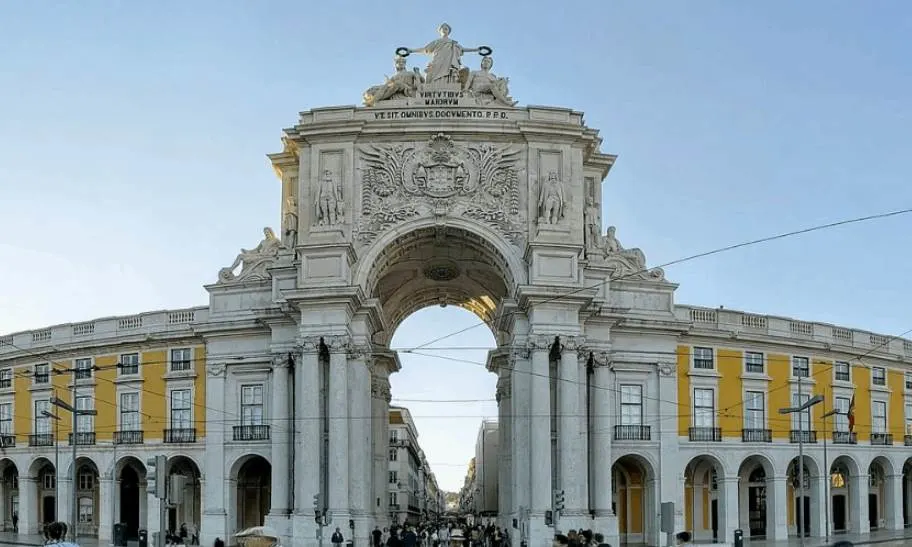
4. The original plan wasn’t to build a triumphal arch

One of the most interesting facts about the Rua Augusta Arch is that it originally wasn’t a triumphal arch but another sort of monument.
The original design was to make it serve as a bell tower, something that was later changed. The clock which is visible on the opposite end of the square was added in the year 1941.
In case you wonder, there are no bells inside the monument.
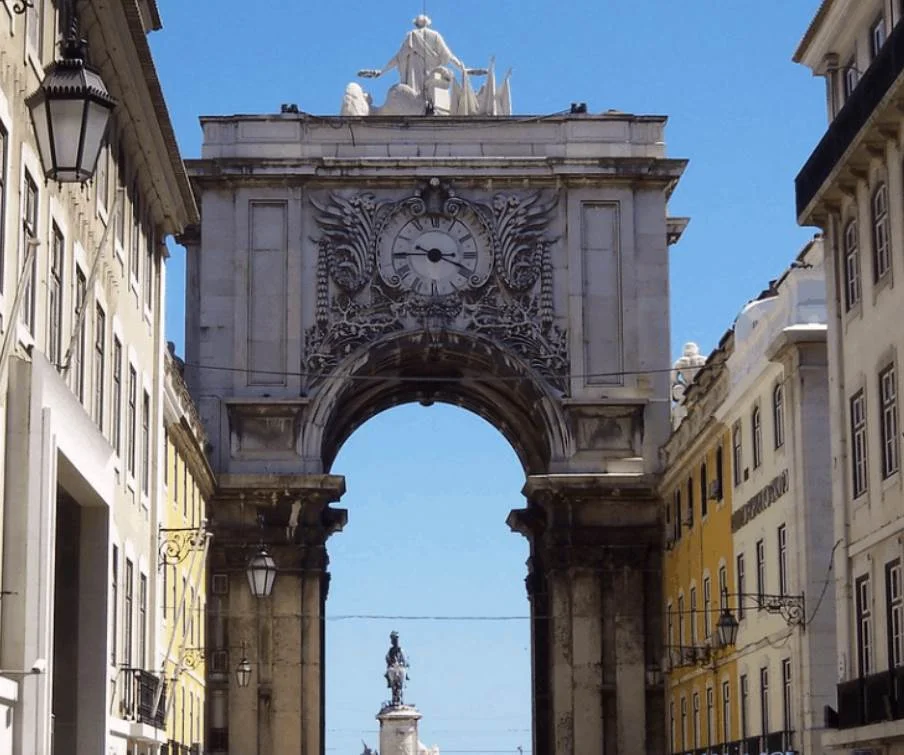
5. It took well over 100 years to complete the arch
As you might have expected, building this huge monument, although a noble idea at the time, wasn’t a priority after the complete city was flattened by the 1755 earthquake.
Nevertheless, construction started on and off and it wasn’t until late in the 19th century that the arch was completed.
The arch was officially completed in the year 1875, over 120 years after the construction of the monument had started.
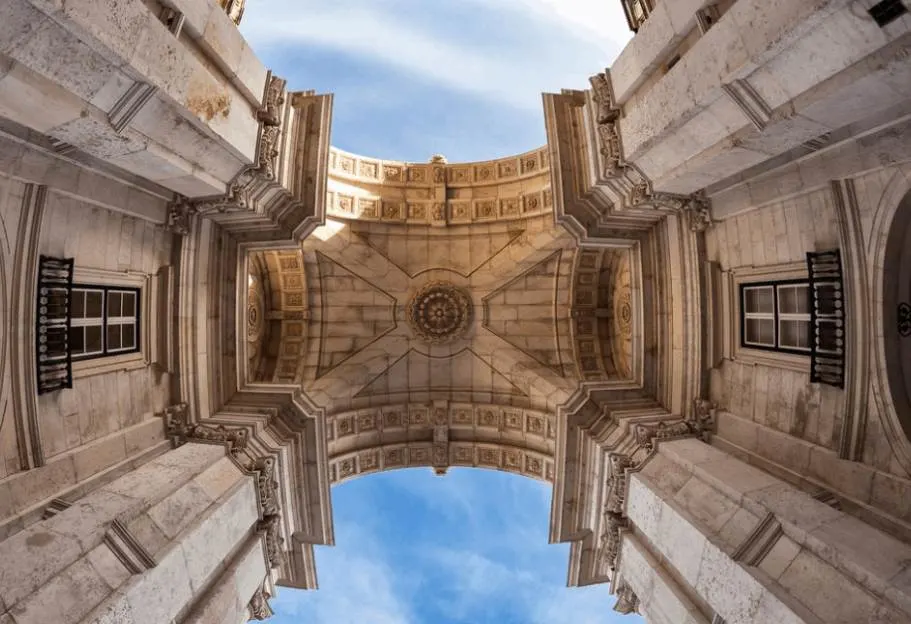
6. How tall is the Rua Augusta Arch?
One remarkable feature of the Rua Augusta Arch is that it has an enormous space between the arch crown to the top of the arch. This space is elaborately decorated with the coat of arms of Portugal.
The arch itself stands over 30 meters (100 feet) tall and has 6 pillars which are about 11 meters (36 feet) high.
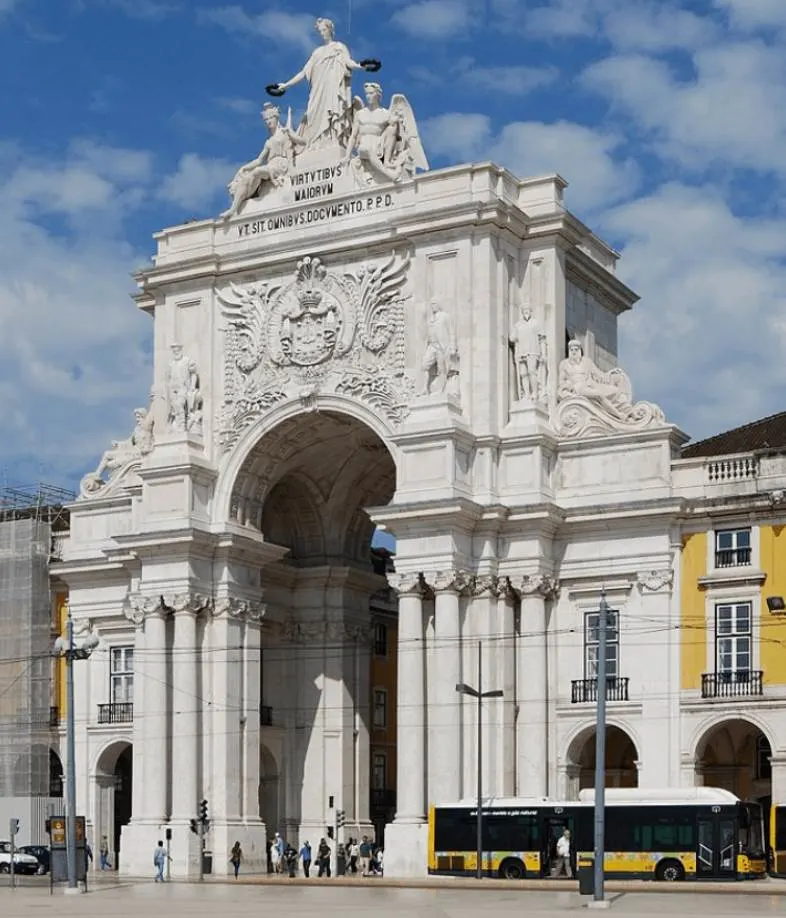
7. The arch has a massive statue on top of it
Because of the height of the arch itself, the sculpture decorating the top of it had to be very big as well. That’s why the main figure stands about 7 meters (23 feet) tall.
The allegorical group of statues on top of the arch was created by French sculptor Célestin Anatole Calmels and represents Glory rewarding Valor and Genius. Glory is depicted as a female dressed in a typical ancient Greek dress.
Valor on the other hand is depicted as an amazon wearing a helmet with dragon patterns and Genius is depicted as Jupiter, the king of the gods in Ancient Roman Mythology.
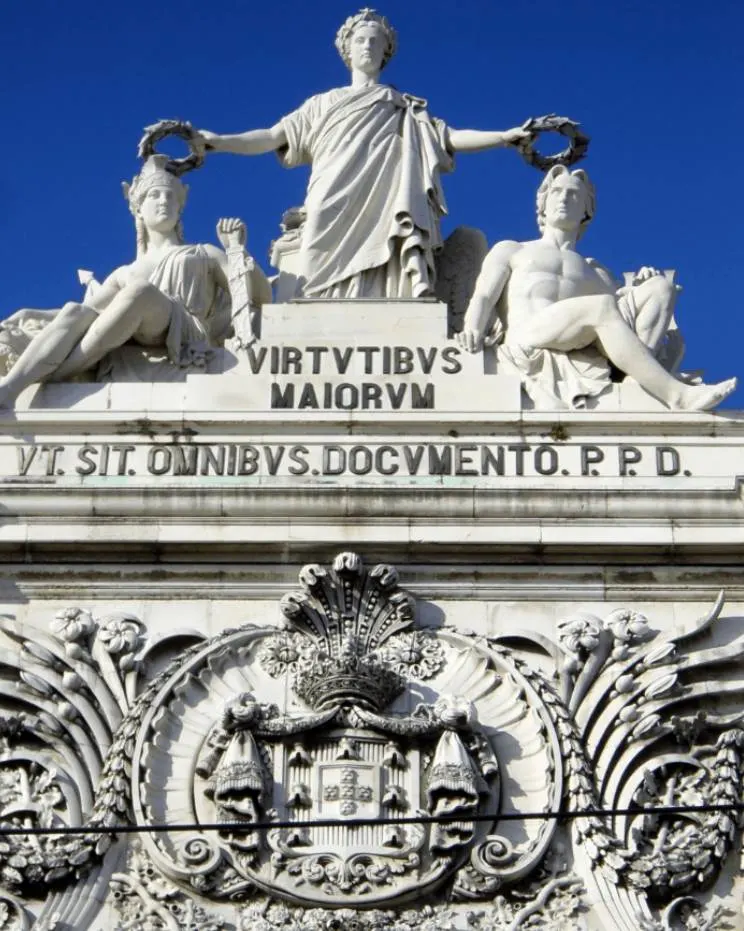
8. There are 4 additional statues on top of the columns
At the sides of the arch, 2 sculptures represent the rivers Tagus and Douro, the two most important rivers in Portugal.
On the pillars, 4 more statues were created in the 19th century by Portuguese sculptor Vítor Bastos (1832-1894). These represent various important figures in the history of Portugal:
- Nuno Alvares Pereira – 14th-century Portuguese general – Right side
- Sebastião José de Carvalho e Melo, Marquis of Pombal – 18th-century POrtuguese statesman – Right side
- Vasco da Gama – Famous Portuguese explorer – Left side
- Viriathus – Leader of the Lusitanian people who resisted the Roman expansion in modern-day Portugal – Left side

9. The top of the Rua Augusta Arch offers amazing views
Did you know that you can take a spiraling staircase that leads you to the top of the Rua Augusta Arch?
One of the coolest facts about the Rua Augusta Arch is that you can take an elevator that brings you to an area inside the arch near the clock, and then you just need to take the staircase to reach the 360-degree panoramic observation deck.
Here you will be able to catch some stunning views of the Praça do Comércio, the River Tagus, and the Baixa District of Lisbon!

